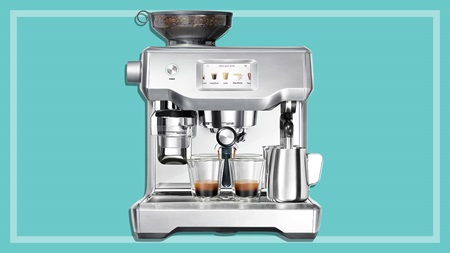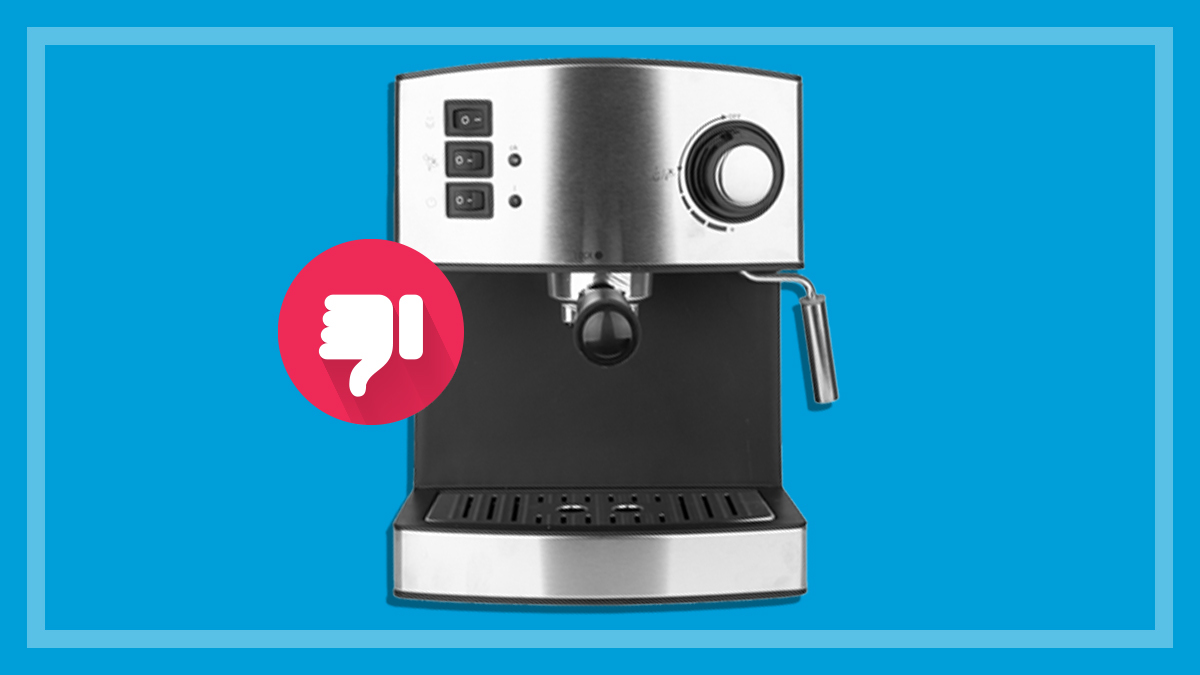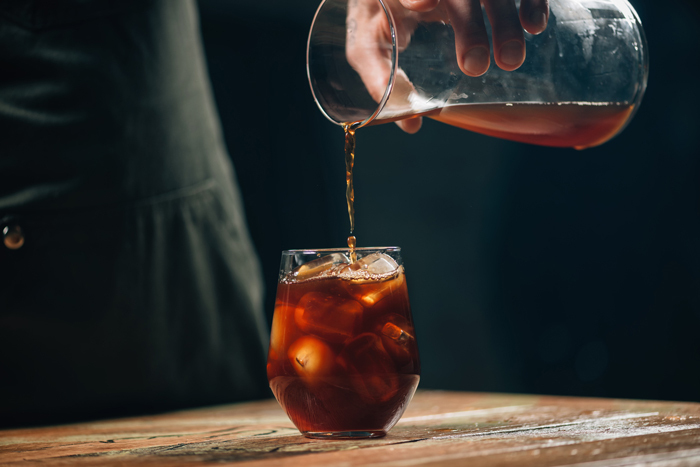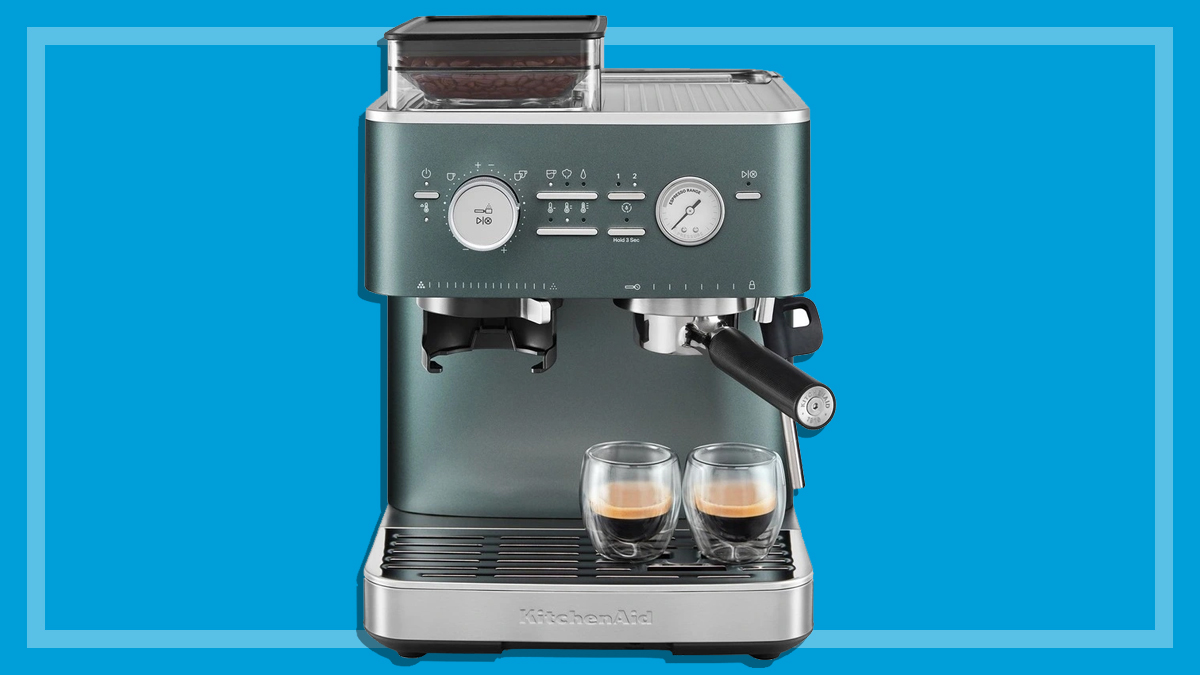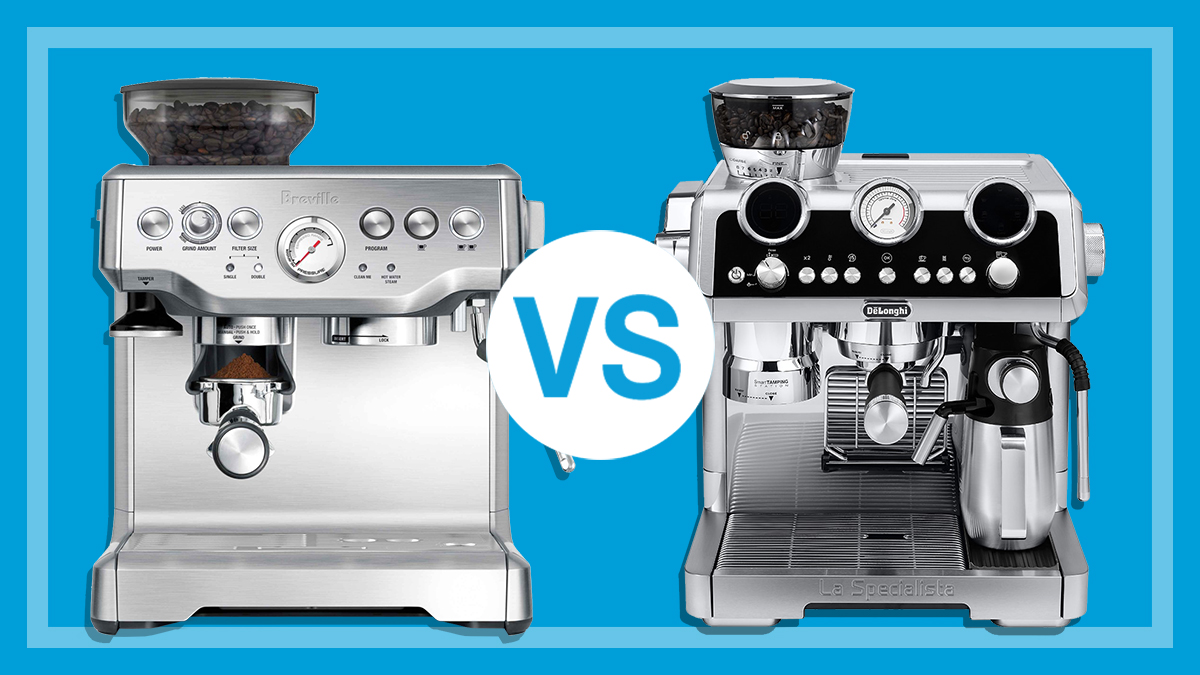Get our independent lab tests, expert reviews and honest advice.
Is it worth buying an espresso machine?
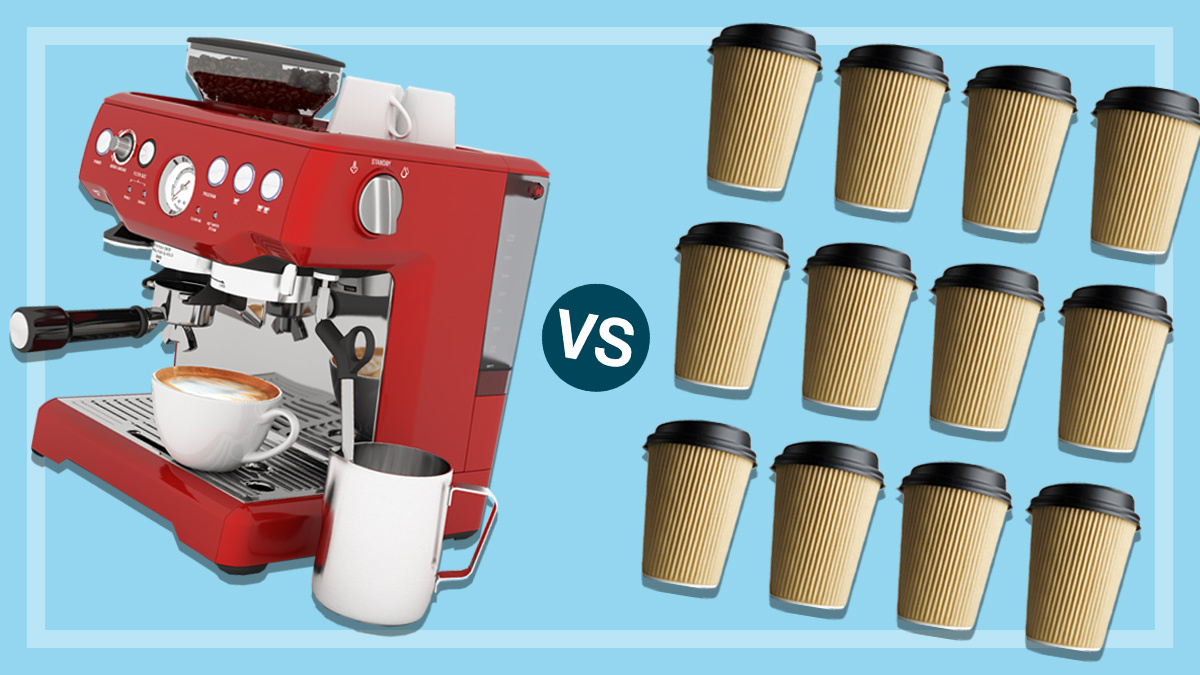
Need to know
- Our analysis shows that using a home espresso coffee machine to make your coffee is significantly cheaper than buying daily coffee from a cafe
- Convenience, environmental impact and your coffee-making skill level are also factors to consider when deciding whether you should buy a coffee machine
- Our expert testers review a wide range of coffee machines – from manual to semi-automatic, automatic and pod machines – to help you find the best one for you
With the soaring cost of living combined with eye-watering increases in the price of cafe coffee, many Australians are looking to reduce the cost of their daily caffeine fix by making more of their coffees at home.
With many cafes now charging between $5.50 and $6.50 for a large coffee, there are clear financial benefits to cutting this cost out of your weekly budget.
There’s also the convenience of being able to brew your own cuppa without leaving the comfort of your kitchen (perhaps before your local is even open for the day, or after closing time), as well as the benefits to the environment since you won’t be sending any takeaway cups to landfill.
Many cafes are now charging between $5.50 and $6.50 for a large coffee
Of course, to start your at-home barista journey, you’ll need a decent coffee machine that makes a coffee that’s up to scratch, and one that suits both your skill level and the time and effort you’re willing to put in to the coffee-making process. But how much will making your coffee at home really save you once you’ve invested in a machine?
Here’s a breakdown of the key factors to consider when deciding whether to ditch your habit and turn to home coffee brewing instead.
1. The cost to your pocket
Given that a cup of coffee from a cafe can cost anywhere from around $5 or up to $7.50 (depending on the size you buy, where you’re buying it and the milk you prefer), you could be spending around $1800 a year or more if you have one cup of cafe coffee a day.
And the amount coming out of your budget increases further if you sometimes sneak in an extra brew or two, or if there is someone else in your household who is also buying coffee from a cafe.
So, would you be better off taking that cash and investing it in your own coffee machine? Let’s have a look at the numbers.
The cost of the machine
At CHOICE, we review a wide range of coffee machines – automatic, semi-automatic, manual and pod – and they vary hugely in price from as little as $79 up to $4990.
Pod or capsule coffee machines are usually cheaper than manual or semi-automatic espresso machines (you can pick up a basic pod unit for less than $100 or splurge over $1000 on a machine with fancier features).
But our expert taste testers agree that if you’re fussy about flavour, a manual or semi-automatic espresso machine will almost always give you the best, most barista-like results. This is because they give you more control over the brewing process, including grinding, dosing, tamping, extracting and steaming, to help you get as close as possible to that cafe-quality coffee.
A good manual or semi-automatic espresso machine should last you about eight years or more
And while they’re generally more expensive to buy than a pod machine, a good manual or semi-automatic espresso machine should last you about eight years or more.
Although some manual and semi-automatic espresso machines in our review come with eye-watering price tags, you don’t always have to spend a fortune to get a decent machine. You can go all out and drop thousands, but a number of models that score well in our expert reviews cost around $800 or less – check out our coffee machine reviews to see if you can pick up a bargain model that scores well.
We also give each machine a brand reliability and brand satisfaction score, based on responses from CHOICE members, so you can assess how brands have performed over time for other coffee lovers.
The cost of a grinder
Getting the right grind is an essential part of the coffee-making process, as it has a huge impact on the flavour of your brew.
Some coffee machines have in-built grinders, while others will require you to buy a separate grinder which will be an additional cost.
Burr grinders start at about $100. They’re more expensive than blade grinders, but CHOICE testing shows that they’re worth the money because they produce an even grind and superior flavour.
The cost of the coffee: Coffee beans vs pods
You also need to take into account the cost of pods and capsules if you have a pod or capsule machine, or coffee beans if you have a manual, semi-automatic or automatic machine. This is where your cash outlay will vary wildly.
Although you can pick up a bag of coffee beans from the supermarket from around $20–$30 per kilogram, coffee aficionados will argue the best results will come from coffee beans from specialty roasters, which could cost you $60–70 or more per kilogram.
Depending on the size of your grind, a kilogram of beans should give you about 120 to 140 shots of coffee (based on eight grams for a shot).
You may outlay less cash initially for a pod or capsule coffee machine, but the pods themselves can be much more expensive
Even though you may outlay less cash initially for a pod or capsule coffee machine, the pods and capsules themselves can be much more expensive (not to mention the cost to the environment if you don’t recycle them) – they’re about $150 a kilogram on average.
If you settle on a more expensive manual or semi-automatic machine that costs, say, $1200, it works out at just $150 a year over an eight-year lifespan. Add to that the cost of coffee beans for one cup a day, and milk, and your at-home espresso machine will still cost you less than a daily cafe coffee habit.
You should also make allowances for the cost of minimal energy use, plus occasional maintenance, replacement of parts such as filters and products such as descaling liquid.
Doing the maths: Making a coffee vs buying one
We’ve compared coffee costs for a year below, based on buying a semi-automatic espresso machine that will deliver barista-like results.
Keep in mind that your personal preferences (for equipment, coffee brand, the type of milk and how much you use) will change the costs – this is a guide only.
We have based our analysis on one large coffee per day from a cafe at a cost of $5.50 per coffee. To calculate your personal cafe coffee cost, just multiply the cost of your daily brew (or brews) by 365 to see how it compares to the cost of making coffee at home.
Buying coffee versus making it: How much cheaper is it to make your coffee at home?
Coffee at home:
Cost of manual espresso coffee machine: $150 (based on a $1200 machine over eight-year lifespan)
Cost of coffee: $292 (based on one coffee a day using 16 grams per double shot at $50/kg)
Cost of milk: $182.50 (250ml per cup at $2/litre)
Parts and maintenance per year: $100
Total cost per year of making your coffee at home: $724.50 per year
Takeaway coffee from a cafe
One coffee a day (double shot latte) x $5.50 x 365 days= $2007.50 per year
You could save $1283 per year making coffee at home
2. The cost to the environment
Unless you fastidiously use a BYO cup every time you go to a cafe, you’re contributing to the one billion takeaway coffee cups that Australians send to landfill every year. Each cup takes thousands of years to decompose.
If you make your coffee at home instead of buying takeaways, that’s potentially 365 takeaway cups you’re saving from landfill every year. You can even use the grounds in your compost (just mix it with organic garden waste first, as it’s too acidic on its own).
If you use a mug everyday, that’s potentially 365 takeaway cups you’re saving from landfill every year
Using a pod machine can be far more problematic when it comes to waste. While convenient, spent pods can’t be put in council recycling bins – their tiny size means they drop through the recycling equipment.
The alternative is taking or posting them to specially designated collection points (as Nespresso offers), but that relies completely on the drinker’s time and dedication to the cause.
Thankfully, there’s a growing range of compostable and refillable pods on the market that aim to reduce waste, however using them can be fiddly and time-consuming which takes away some of the convenience of using a pod machine in the first place.
3. Convenience
Some might say that picking up a takeaway coffee is the ultimate convenience: you don’t have to spend time buying beans, grinding them at home, perfecting your skills or cleaning a machine. It’s all happily done for you by a smiling barista.
Another plus of cafe coffee is the social factor of sharing your coffee experience with a friend or colleague. Even the ritual of the morning walk to pick up your flat white can often be a highlight of your day.
Others would argue it’s much more convenient to just walk to your kitchen to make a coffee – you don’t even have to put on proper clothes or leave the house! If you’re an early riser, you may need your caffeine fix before the local is even open. And, if you’re working from home, it’s easy to duck into the next room to make a cuppa between video chats or phone calls.
4. Your level of skill
Of course, the ‘home vs cafe‘ comparison relies heavily on you learning to make a coffee that rivals a barista-made one. For that reason, CHOICE coffee machine expert Adrian Lini says: “If you’re investing in a manual or semi-automatic espresso machine, learning how to use it properly will make all the difference to the flavour of your coffee.”
There are so many things that go into creating the perfect coffee on a semi-automatic or manual machine. There’s the machine itself, the quality of the beans you’re using, adjusting the grind, tamping the coffee correctly, frothing the milk and getting the perfect pour. Thankfully, there are plenty of great coffee tutorials online to learn from.
“Our CHOICE testing has shown time and time again that once you nail the technique, a manual machine or a good-quality semi-automatic machine will give you the best tasting coffee of all the machines. This is because you’re able to tweak the most elements to ensure coffee perfection,” Adrian says.
Baristas can charge $5.50 a cup for a reason – it’s because they’re (usually) specially trained and using the best beans. If you can’t replicate that at home, you might find yourself heading back to the cafe and leaving your coffee machine to become a benchtop relic.
If you’re investing in a manual or semi-automatic espresso machine, learning how to use it properly will make all the difference to the flavour of your coffee
CHOICE coffee machine expert, Adrian Lini
“Our tests have found that the brand and type of coffee machine you’re using is one of the things that really makes a difference. Our blind taste tests show that, even when using the same type of coffee, there are surprisingly different results from machine to machine,” says Adrian.
“How easy the machine is to use and the skills of the person using it also have an impact, particularly when it comes to manual or semi-automatic espresso machines.”
When we review coffee machines, we give each machine a CHOICE Expert Rating which is a score that ranks machines based on how easy they are to use, how they perform on tasks such as frothing milk and achieving consistency of temperature, and the resulting coffee taste.
5. Being able to make your coffee the way you like it
Making your own coffee at home means you’re not bound by the brand of coffee sold at your local cafe, and you can experiment with lots of different blends to find one you really love, and perhaps support some local roasters in the process.
You can also avoid that awkward situation when your favourite barista is not rostered on and someone else makes an inferior coffee (that’s five or six bucks down the drain!)

